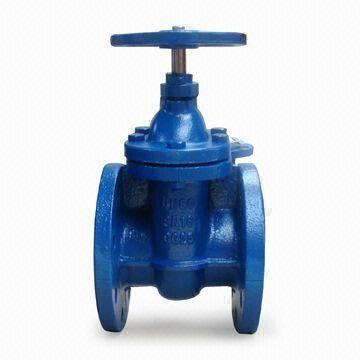The operation of manual valves
Posted: 11/22/2018 13:40:16 Hits: 107
Manual valves are a type of valves operated by handles or hand wheels and commonly used on equipment and devices. Generally, rotating the handle or hand wheel clockwise will turn off the valve while rotating anticlockwise will turn on the valve. But some valves have the opposite direction of opening and closing, so it is necessary to check the signs of opening and closing before operation.
The sizes of the handles and hand wheels of manual valves are designed according to average hand size. Therefore, it is stipulated in the use of valve that the operator is not allowed to open and close the valve by means of a lever and a long wrench, besides, only one person can operate when the length of the handle and the diameter of hand wheel are less than 320mm, while two people, or one person with an appropriate lever (no more than 0.5m normally) are allowed to operate, if the diameter of hand wheel is over 320mm. However, levers, long wrenches and excessive force are prohibited for operation with diaphragm valves and non-metallic valves.
Some operators like to use a lever and a long wrench with excessive force to operate manual valves, which will cause premature failure of the valves and even an accident. It has been proved that in addition to the impact type hand wheel, excessive force can damage the hand wheel, handle, and scratch the valve stem and sealing surface. Besides, if the hand wheel or handle are damaged or lost, they should be timely replaced but not by a spanner.
The discs of valves such as gate valves and globe valves should be rotated a quarter turn to a half turn when closing or opening to the top dead center or bottom dead center, so that the threads can be closed more tightly, which will facilitate inspection during operating and avoid damaging the valves.
Some butterfly valves, gate valves and globe valves that have relatively large diameter are with bypass valves, which are for balancing the differential pressure between the inlet and outlet, and reduce the opening torque. The bypass valve should be open first, then the valve.
The pipe must be preheated (for removing condensate water) before opening the steam valve. Slowly open the valve in order to avoid water hammer and prevent damaging the valve and device.
When opening and closing ball valves, butterfly valves, or plug valves, the groove on the top of the valve stem parallel to the passage indicates that the valve is fully open. When the valve stem is rotated 90-degree to the left or right, and the groove is perpendicular to the passage, that means the valve is fully closed. The fully closing and opening of some ball valves, butterfly valves or plug valves are indicated by the relative position of wrench and passage. The operation of three-way or four-way valves should follow the markings of opening, closing and reversing and free handle should be taken out after operation.
For gate valves and throttle valves with scales, as well as OS & Y gate valves and globe valve, check the position of the indicator of fully opening and closing, which can avoid impacting the top dead center when fully opening. When the valve is fully closed, the scale and the mark can be used to find out the detached closing piece, or bear against foreign body, so as to prevent malfunction.
Newly installed pipes and equipment contain lots of dirt, cinders, etc. these will stick to the sealing surface of the manual valves during operation. So slightly open the valve to let the high-speed medium wash away those foreign bodies and then gently close it.
Some manual valves will contract when closing due to their temperature dropping, which will cause a small gap in the sealing surface and leakage. If this happens, the valve should be turned off again at the appropriate time after the first turn-off.

